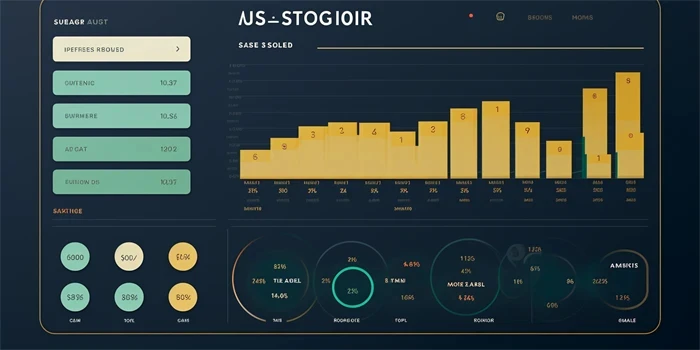Introduction:

In today’s digital age, protecting sensitive data has become an ever more critical task. With the increasing number of data breaches and cyber threats, traditional cybersecurity measures alone are no longer sufficient. This is where the power of Artificial Intelligence (AI) comes into play. By leveraging AI algorithms and machine learning techniques, organizations can enhance their cybersecurity defenses and safeguard their users’ data effectively. In this article, we will explore how AI is revolutionizing the field of cybersecurity and discuss its crucial role in preventing data breaches.
1. Automated Threat Detection:
AI-powered cybersecurity systems can continuously monitor network traffic, detect anomalies, and identify potential threats in real-time. These systems learn from historical data and apply advanced algorithms to discern normal patterns from malicious activities. By automating threat detection, AI reduces response time and increases the accuracy of identifying and mitigating cyber threats.
AI software like Darktrace and Vectra are popular examples that utilize machine learning algorithms to detect and respond to cyber threats. They provide real-time threat detection, allowing organizations to take immediate action to prevent data breaches.
2. Phishing and Spam Protection:
Phishing attacks and spam emails remain significant cybersecurity threats, often serving as entry points for larger-scale data breaches. AI can analyze patterns in emails, identify malicious content, and protect users from falling victim to phishing attempts. By leveraging Natural Language Processing (NLP) algorithms, AI systems can detect suspicious phrases, links, or attachments in emails and flag them for further investigation or block them altogether.
3. User Behavior Analytics:
AI models can analyze user behavior to establish normal patterns and detect any deviations that may indicate a potential cyber threat. By analyzing factors such as login locations, access times, and system interactions, AI can identify anomalies indicative of unauthorized access or suspicious activities. This enables organizations to proactively detect and prevent data breaches caused by compromised user accounts.
Tools like Splunk User Behavior Analytics and Exabeam utilize AI algorithms to identify and respond to anomalous user behavior, mitigating the risks associated with data breaches.
4. Vulnerability Assessments:
AI can contribute to the identification of vulnerabilities in an organization’s digital infrastructure. By analyzing vast amounts of data and leveraging machine learning algorithms, AI solutions can pinpoint potential entry points for cyber attacks. This allows organizations to prioritize vulnerability patching and preventative measures to safeguard their systems from exploitation.
Solutions such as Tenable.io and Qualys Vulnerability Management utilize AI algorithms to scan networks, identify vulnerabilities, and provide actionable insights for enhancing cybersecurity defenses.
5. Intrusion Detection and Prevention:
AI can significantly enhance intrusion detection and prevention systems (IDPS) by automating the monitoring and analysis of network traffic. These AI systems can detect and respond to threats in real-time, effectively preventing unauthorized access and data breaches.
A popular IDPS tool, Snort, uses a combination of signature-based and anomaly-based detection supported by AI to identify potential intrusions and block malicious network traffic in real-time.
6. Threat Intelligence:
AI can help cybersecurity professionals stay ahead of emerging threats by analyzing vast amounts of threat intelligence data. By automatically processing and correlating data from multiple sources, AI systems can identify patterns and indicators of compromise, enabling proactive measures to be taken before a breach occurs.
Tools like Recorded Future provide AI-driven threat intelligence, equipping organizations with insights into potential threats, vulnerabilities, and attack vectors.
7. Malware Detection:
AI algorithms powered by machine learning can analyze patterns and characteristics of known malware to identify new and evolving malware variants. By dynamically learning from billions of samples, AI can detect and respond to previously unseen malware, protecting users and systems from infection.
Popular endpoint protection tools like McAfee and Cylance utilize AI to detect and block malware, ensuring the security of user systems.
8. Security Auditing and Compliance:
AI can streamline security auditing and compliance processes by automating the analysis of vast amounts of data. By using advanced algorithms, AI systems can detect non-compliant activities and generate reports to ensure that organizations meet regulatory requirements.
Tools like SecurityScorecard and Rapid7 provide AI-powered scanning and auditing capabilities, enabling organizations to identify security gaps and maintain compliance.
Conclusion:
As data breaches continue to pose significant risks in the age of digital connectivity, AI technologies offer robust solutions to safeguard users and protect sensitive information. Through automated threat detection, phishing and spam protection, user behavior analytics, vulnerability assessments, intrusion detection and prevention, threat intelligence, malware detection, and security auditing, AI empowers organizations to proactively defend against cyber threats. By embracing the potential of AI for cybersecurity, businesses can ensure data privacy and maintain trust in the digital ecosystem.
Frequently Asked Questions (FAQs):
Q1: Can AI completely eliminate data breaches?
A1: While AI greatly enhances cybersecurity defenses, it is not a foolproof solution. Constant innovation and human expertise are still essential for addressing new and evolving threats.
Q2: Is AI accessible to small businesses with limited resources?
A2: Yes, there are AI-powered cybersecurity solutions available for businesses of all sizes. Some solutions offer affordable subscription plans tailored to the needs and budget of small businesses.
Q3: Are there any ethical concerns regarding the use of AI in cybersecurity?
A3: Yes, the use of AI in cybersecurity raises ethical concerns surrounding privacy, data protection, and potential biases in algorithms. Continued research and evolving regulations are necessary to address these challenges.
References:
1. AI in Cybersecurity: Leveraging Artificial Intelligence for Cyber Threats. (n.d.). Retrieved from [link]
2. Lingad, K. (2021). The top 9 cybersecurity AI software tools. Retrieved from [link]
3. Paganini, P. (2020). Can artificial intelligence improve cybersecurity? Retrieved from [link]


